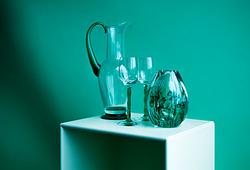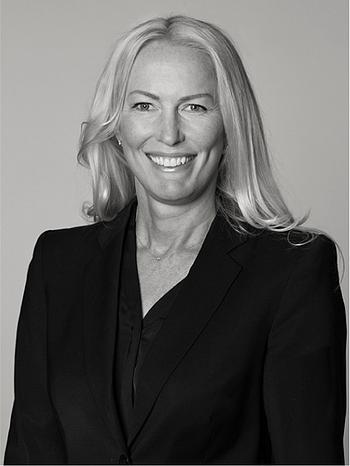Reijmyre Glasbruk
A marqueterie-sur-verre glass vase, probably by Betzy Ählström or Fredrik Kessmeier, ca 1901-1905.
Decorated with a diver underwater and fish in green shades, unsigned. Height 23.8 cm.
Base chips.
Kirjallisuus
Dag Widman, "Jugendepokens konstglas", Svenskt Glas, Växjö 1995, pp. 66-68.
Gunnel Mörkfors (ed.), "Jugendglas från Reijmyre", Östergötland County Museum, exhibition catalogue no. 86, 2010, cf. various designs and vases with marine motifs, signed by Betzy Ählström, Anna Boberg, and Ferdinand Boberg, pp. 15-20.
Bukowskis Modern Art + Design, sale 640, nr 4, compare another vase of the same form and similar size, probably designed by Betzy Ählström.
Muut tiedot
Only a few items using this complex technique were produced at Reijmyre during a short period leading up to the Turin World's Fair in 1902 and shortly thereafter.
The Turin World's Fair took place from May to November 1902. Fredrik Kessmeier and Carl Reimers were tasked with overseeing the production of these advanced glass artworks, and the first pieces for the Turin exhibition were blown in Kessmeier's workshop. Dag Widman writes: "The artists behind Reijmyre's collection of glass for the exhibition were Anna and Ferdinand Boberg as well as Betzy Ählström. Unlike Kosta, Reijmyre now worked with a technique where the glass received its decoration in the furnace work through marvering and application. The models also exist here at Gallé, where the technique is called 'marqueterie sur verre'. The glass batch was rolled in coloured crushed glass and different coloured glass rods were placed on the batch, after which the whole was heated and rolled against the marver plate. The applications were often ground afterwards. The effect was not unlike the later graal glasses, as the patterns were mainly inside the glass mass." In Reijmyre glassworks' production book from the years 1901-02, one can follow the entire production of these "Gallé glasses", which were made from December 1901 until August 1902 (it has later emerged that the models continued to be produced until 1905). The complex technique was not suited for mass production and eventually ceased, and the factory returned to focusing entirely on crystal glass.
Betzy Ählström (1857-1934) worked as a drawing teacher and was artistically trained in painting and drawing. She was connected to Reijmyre glassworks as a designer of art glass from 1901-1902 ahead of the exhibition in Turin. She designed, among other items, a vase of the same shape as this one and several other objects with marine motifs.
Fredrik Kessmeier (1859-1946), from a German family of glassblowers, worked as a glassblower at Reijmyre glassworks around the turn of the century 1900. It is possible that he may have also designed his own items.












































